9773 A PAIR OF EBONY AND BURR AMBOYNA LIBRARY TABLES TO A DESIGN BY RICHARD BRIDGENS Anglo-Indian. Circa 1840. Measurements: Height: 28 3/4″ (73cm) ; Width: 48″ (122cm) ; Depth: 24 ” (61cm)
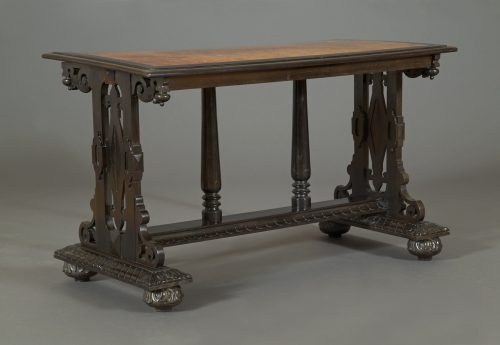
Research
Of ebony and burr amboyna. Each with a rectangular top with a quarter veneered burr inset within a molded edge border, the top raised on two geometric pierced trestle end supports, each trestle carved to the top with acanthus leaves and inverted finials and terminating in a carved acanthine plinth raised on bun feet carved with acanthus leaves, the trestles joined by a rail stretcher surmounted by two tapering and turned uprights.
The design of the present pair of tables was executed by nineteenth century English architect, designer and artist, Richard Bridgens, and was published in his Furniture with Candelabra and Interior Decoration (1838) (figure 1).1 Bridgens is known for his designs in the Baronial style, which was inspired by Scottish Renaissance architecture and relied on the use of dark, heavily carved woods. Popularity of the Baronial taste intensified after a visit to Scotland by George IV in 1822. By 1856 Queen Victoria had acquired and reconstructed a Baronial mansion in the Highlands at Balmoral.
Bridgens worked for contemporaries George Bullock and James Watt furnishing such residences as Battle Abbey in East Sussex for Sir Godfrey Vassal Webster, Aston Hall in Birmingham, and Abbotsford House, home of Sir Walter Scott, whose novels encouraged a romantic view of Scotland bolstered support for the new national architectural style.2
However, the tables are extremely interesting for having been made in the then-British colony of India. This is clear from the use of solid ebony and amboyna (as opposed to ebonizing and veneering in England) and their colonial mode of construction. The tables are thus evidence that highly-sophisticated design derived from English pattern books existed in the British territories abroad.
Footnotes:
1. Jeremy Cooper, Victorian and Edwardian Furniture and Interiors: From Gothic Revival to Art Nouveau, London, 1987, figure 58.
2. Hull, Lise. Britain’s Medieval Castles. Westport: Praeger Publishers, 2006. 154.

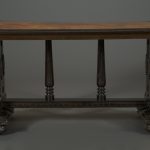
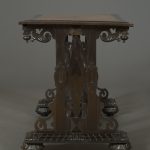
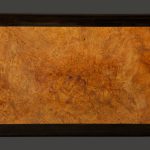
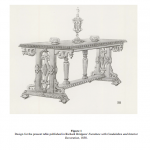
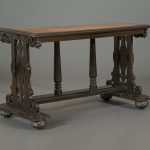
Comments are closed.